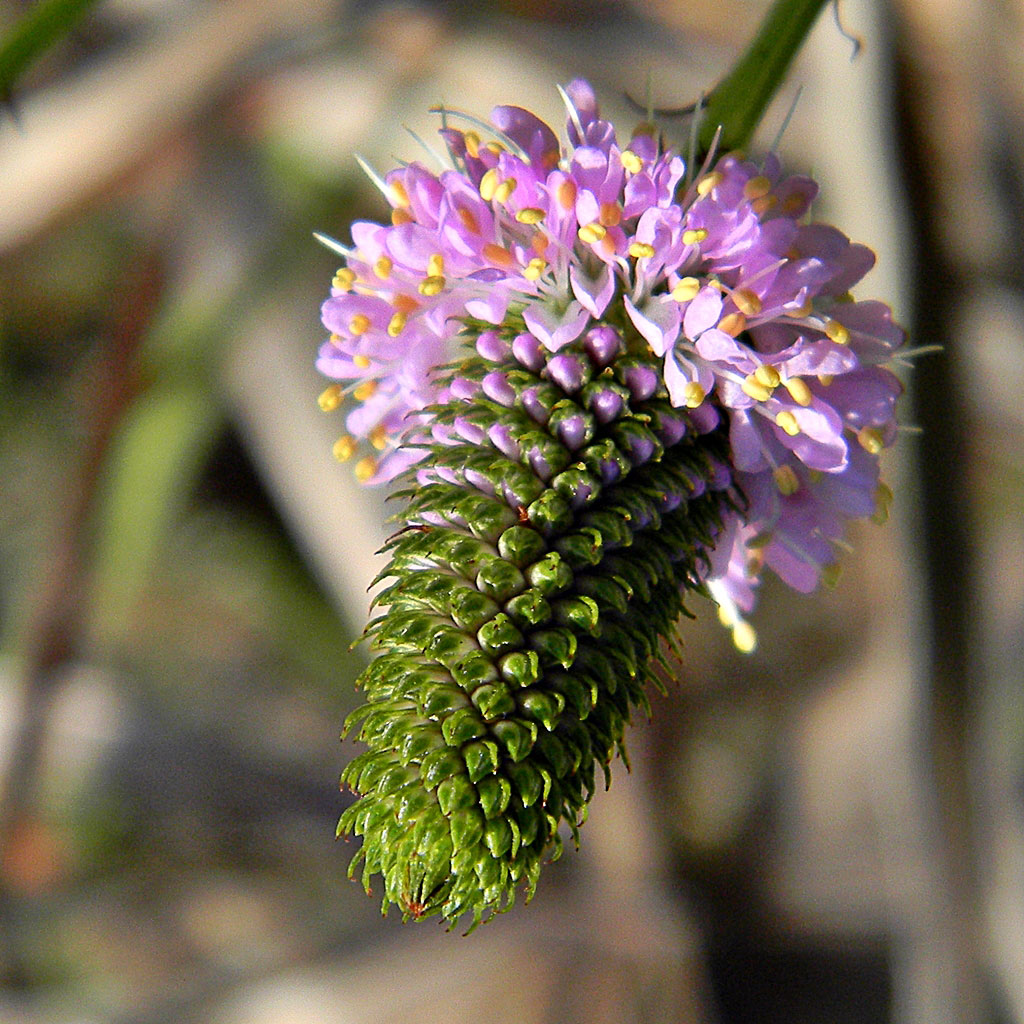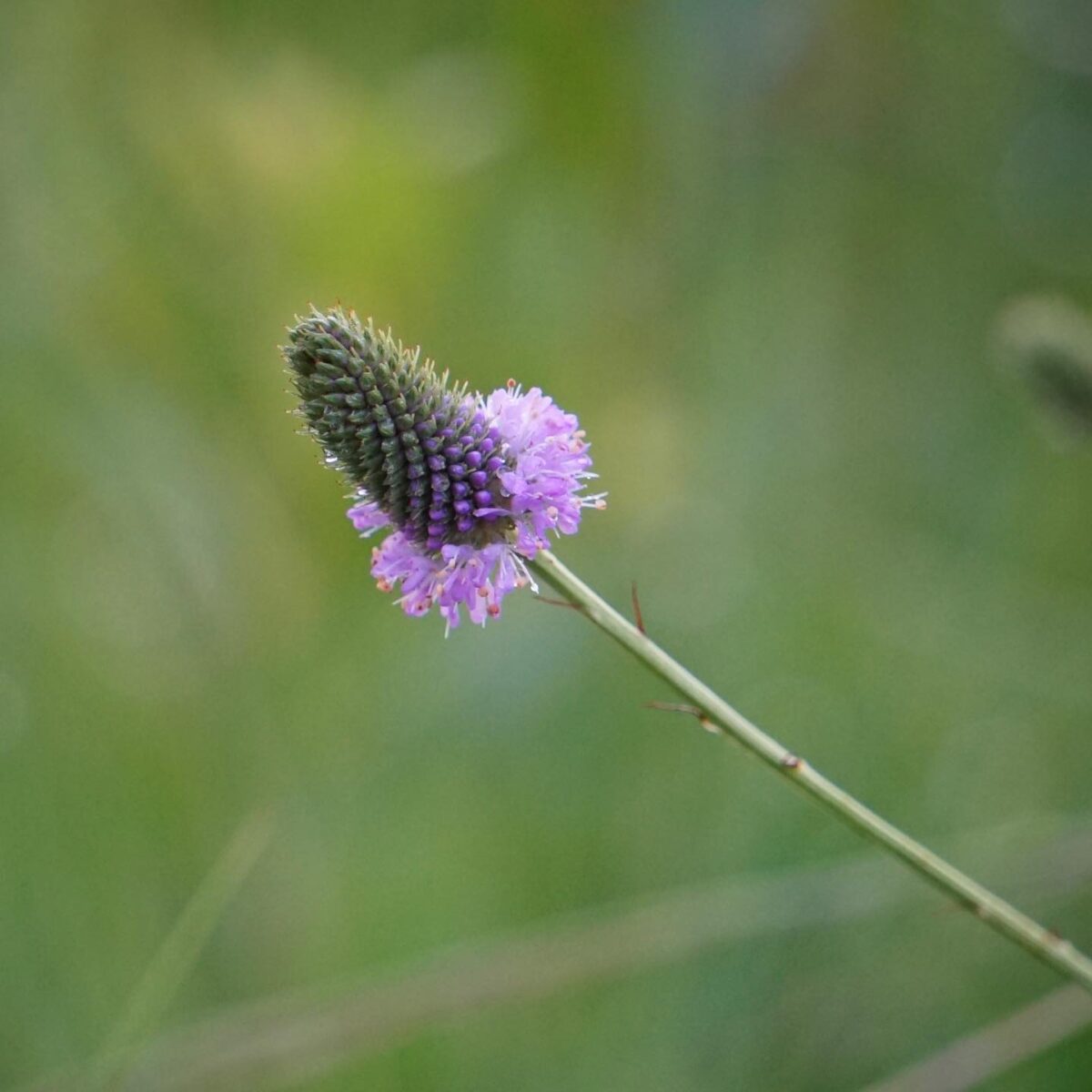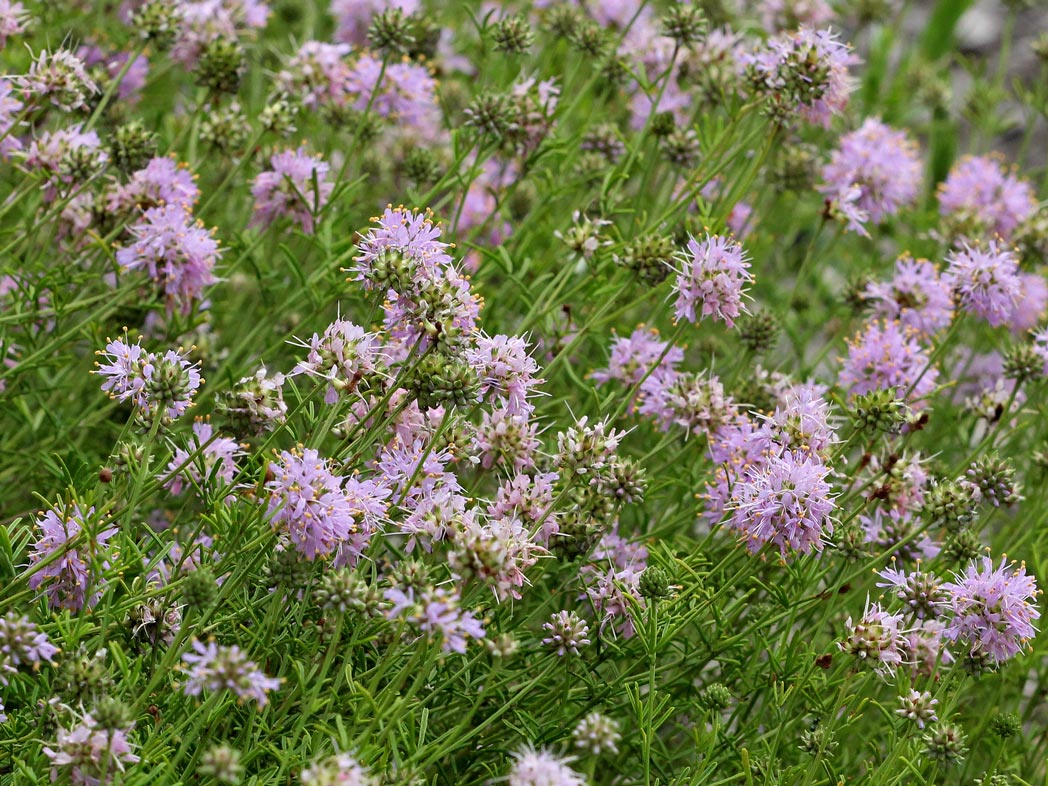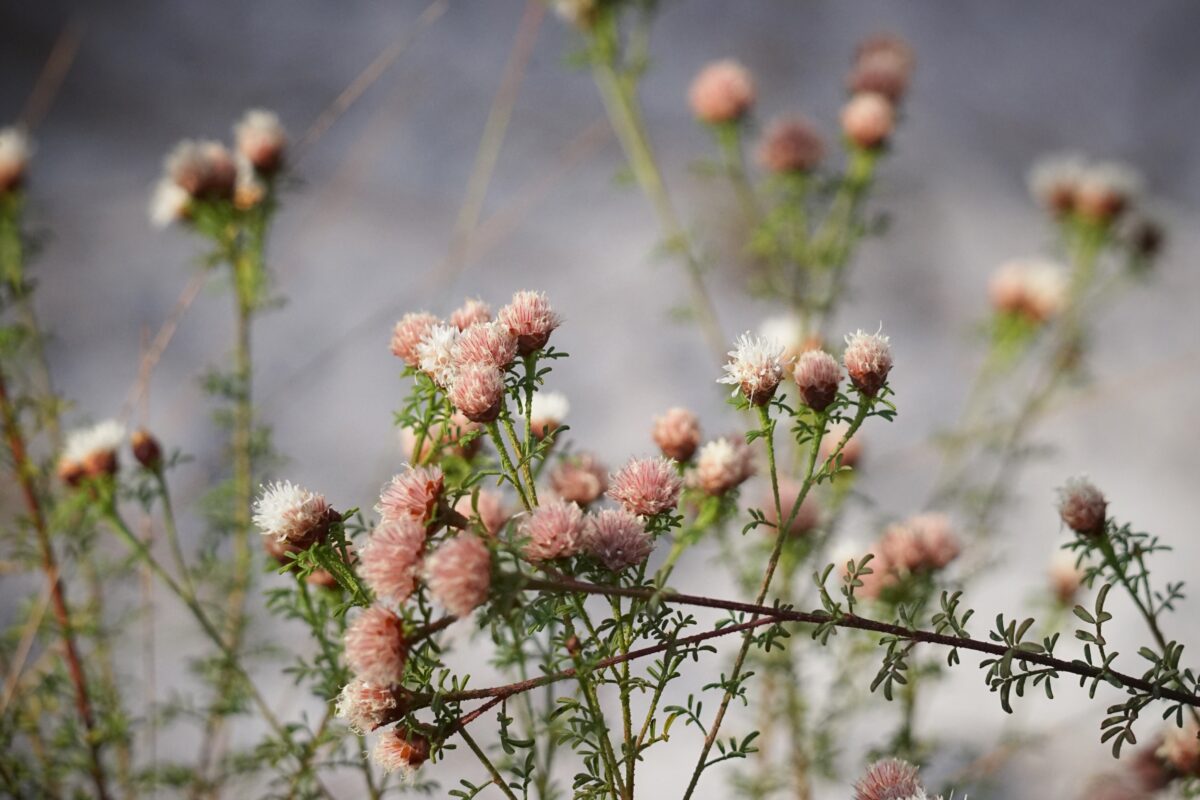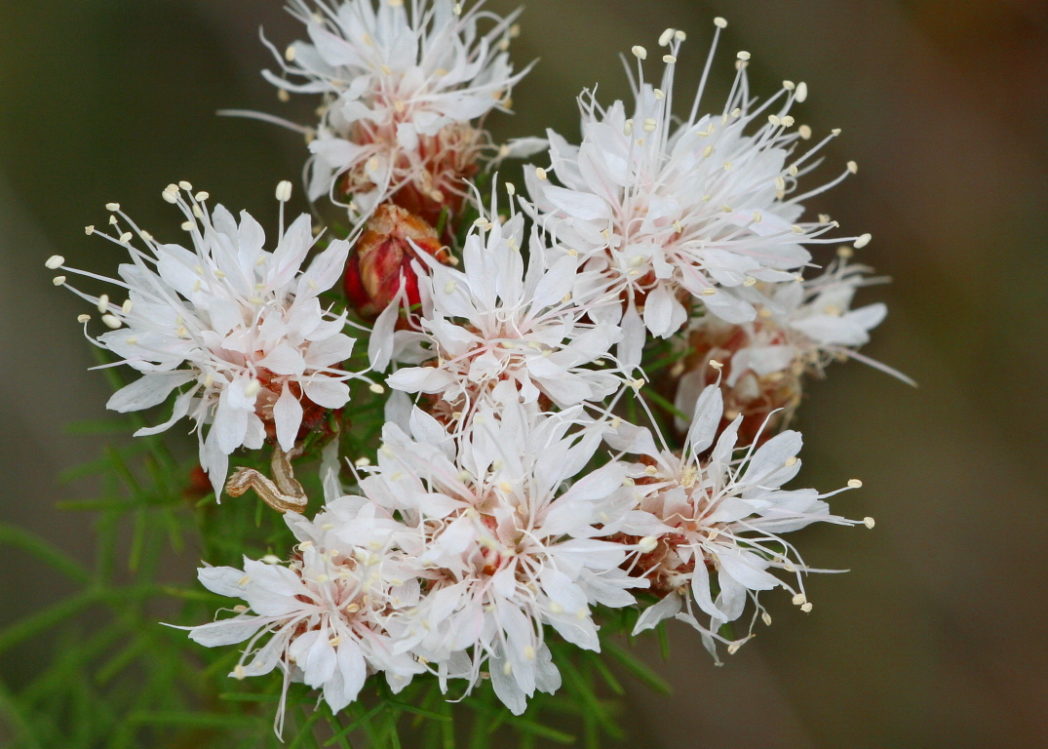Whitetassels
Pictured above: Whitetassels (Dalea carnea var. carnea) taken at Sweetbay Natural Area in Palm Beach County, Florida. Photo by Bob Peterson (CC BY 2.0) Click on terms for botanical definitions. View post as a PDF.
Also known as Pink prairie clover and Pinktassels, Whitetassels (Dalea carnea var. carnea) is an uncommon wildflower found in mesic flatwoods, open meadows and pine rocklands. Its distinct flowers bloom in late spring through early fall and are attractive to pollinators, especially bees. The seeds are eaten by birds and other wildlife.
Whitetassels’ inflorescence is a dense cone-shaped terminal spike that produces 20 or more tiny pink to pinkish-white flowers with noticeable yellow anthers. Leaves are compound. Leaflets are linear with smooth upper sides and often punctate undersides. Stems are thin, multi-branched and may be erect or decumbent. Fruit is a small legume.
Three varieties of Dalea carnea are found in Florida. D. carnea var. albida occurs in the eastern Panhandle and north/north central peninisula; D. carnea var. gracilis occurs exclusively in the Panhandle. Both bear white flowers and are also known as Whitetassels. D. carnea var. carnea is more widespread, occurring throughout the peninsula, and is the only one with pink flowers.
The genus name Dalea is an homage to English physicist and naturalist Samuel Dale (1659–1739). The species epithet carnea is from the Latin carneus, meaning “flesh-colored.”
Family: Fabaceae (Legume, bean or pea family)
Native range: Peninsular Florida
To see where natural populations of Whitetassels have been vouchered, visit florida.plantatlas.usf.edu.
Lifespan: Perennial
Soil: Moist to moderately dry, well-drained sandy or calcareous soils
Exposure: Full sun to high pine shade
Growth habit: 6–18” tall, spreading up to several feet wide
Propagation: Seed
Florida regions of landscape suitability: North, Central, South
Garden tips: Whitetassels works well in a naturalistic planting, or along the edge of a mixed wildflower or butterfly garden. It tends to stay low and spread out, but its loose structure does not form dense mats. It is drought tolerant.
Whitetassels plants are occasionally available from nurseries that specialize in Florida native plants. Visit www.PlantRealFlorida.org to find a nursery in your area.
Learn more about Whitetassels from the Florida Native Plant Society and the Institute for Regional Conservation.
For information on other Dalea species, see these resources:

